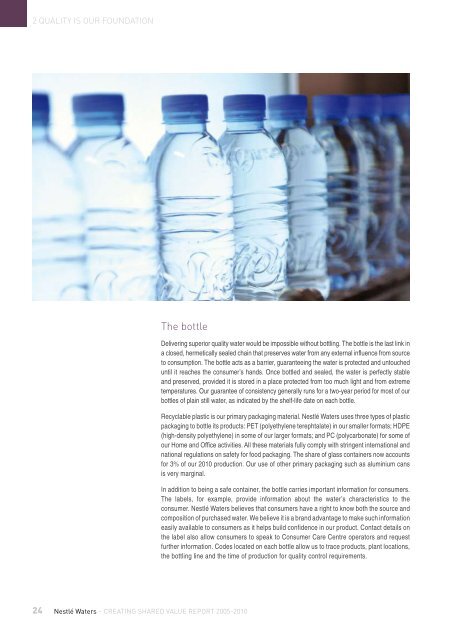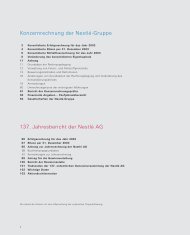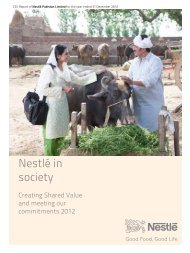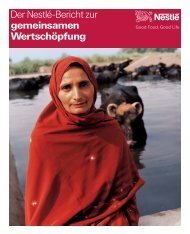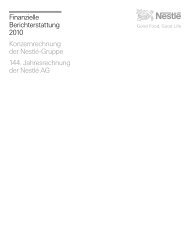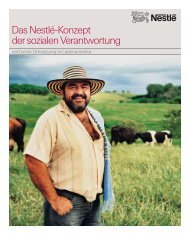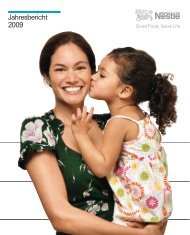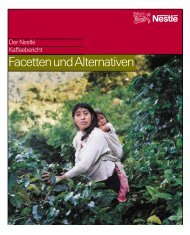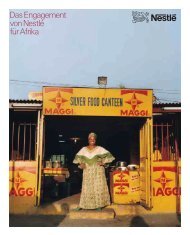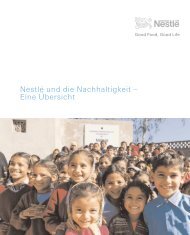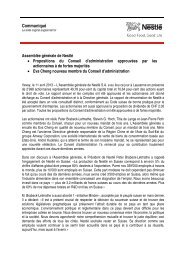Nestlé Waters – Creating Shared Value report
Nestlé Waters – Creating Shared Value report
Nestlé Waters – Creating Shared Value report
You also want an ePaper? Increase the reach of your titles
YUMPU automatically turns print PDFs into web optimized ePapers that Google loves.
2 Quality is our foundation<br />
24<br />
the bottle<br />
<strong>Nestlé</strong> <strong>Waters</strong> <strong>–</strong> CreatiNg <strong>Shared</strong> <strong>Value</strong> <strong>report</strong> 2005-2010<br />
Delivering superior quality water would be impossible without bottling. The bottle is the last link in<br />
a closed, hermetically sealed chain that preserves water from any external influence from source<br />
to consumption. The bottle acts as a barrier, guaranteeing the water is protected and untouched<br />
until it reaches the consumer’s hands. Once bottled and sealed, the water is perfectly stable<br />
and preserved, provided it is stored in a place protected from too much light and from extreme<br />
temperatures. Our guarantee of consistency generally runs for a two-year period for most of our<br />
bottles of plain still water, as indicated by the shelf-life date on each bottle.<br />
Recyclable plastic is our primary packaging material. <strong>Nestlé</strong> <strong>Waters</strong> uses three types of plastic<br />
packaging to bottle its products: PET (polyethylene terephtalate) in our smaller formats; HDPE<br />
(high-density polyethylene) in some of our larger formats; and PC (polycarbonate) for some of<br />
our Home and Office activities. All these materials fully comply with stringent international and<br />
national regulations on safety for food packaging. The share of glass containers now accounts<br />
for 3% of our 2010 production. Our use of other primary packaging such as aluminium cans<br />
is very marginal.<br />
In addition to being a safe container, the bottle carries important information for consumers.<br />
The labels, for example, provide information about the water’s characteristics to the<br />
consumer. <strong>Nestlé</strong> <strong>Waters</strong> believes that consumers have a right to know both the source and<br />
composition of purchased water. We believe it is a brand advantage to make such information<br />
easily available to consumers as it helps build confidence in our product. Contact details on<br />
the label also allow consumers to speak to Consumer Care Centre operators and request<br />
further information. Codes located on each bottle allow us to trace products, plant locations,<br />
the bottling line and the time of production for quality control requirements.


